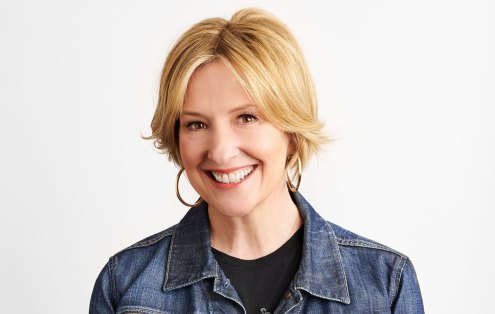Getting to the heart of mindfulness
Perhaps you’re practising mindfulness and have felt its incredible potential, or maybe you’re trying to form a practice, but feel as though something has yet to ‘click’? Mindfulness lover and yoga teacher, Catherine Turner, looks to her heart, in search of a clearer route towards enlightenment

Like many of us, I first discovered meditation and mindfulness as a way to relax, de-stress and deal with the seemingly endless stream of thoughts whirring through my brain. Initially, it was incredibly difficult to meditate. To sit and do nothing felt like a waste of time when I was so busy. But soon I noticed that doing just that for 10 minutes a day allowed me to get off the merry-go-round, giving me the sanctuary my overtaxed mind so desperately needed and – as all who meditate will tell you – the ‘empty’ minutes seemed to create, rather than waste, time.
Every session would feel different and, although I was grappling with often-difficult thoughts, I gradually began to find it easier to direct my attention to the present for longer periods. I became more focused and started experiencing moments of pure joy, which would bubble up out of everyday happenings and events.
But it was not until recently, during a silent retreat that brought up a cataclysm of buried emotion, that I started applying real discipline. So, I found an experienced teacher and began meditating twice a day.
A deeper connection
For the first time, I felt a profound opening up of my inner awareness – my heart’s centre, plumbed into the depths of my soul. My awareness seemed heightened beyond recognition – it was as though my meditation had been turbo-charged, and I felt a tangible letting-go of habitual thought patterns.
Yet, wonderfully, the whole thing felt effortless, ethereal and unlike anything I’d felt before. This was the big ‘click’ I’d been seeking, and it dawned on me that I had spent a lot of time on my earlier meditative journey in ‘mind mode’ something Australian lecturer and researcher in psychology,
Dr Stephen McKenzie, explores in his book Heartfulness, Beyond Mindfulness (Exisle, £12.95). In it, he quotes Jon Kabat-Zinn, the pioneer of modern mindfulness techniques, as saying that, in Asian languages, the words for mind and heart are often the same. For example, in Pali (the Buddha’s language), the word sati means heartfulness as well as mindfulness. ‘Heartfulness is about allowing what’s already there, rather than being results-orientated, or driven by thoughts of, “I’ve got to be this or that”. It’s about connecting to deeper energies and feelings we often cut off from, and returning to basic human values,’ McKenzie says.
Some of those values include kindness, hope and love and, while we talk about these feelings day to day, many of us don’t dig deep and connect with them in a powerful way. ‘We can remain at base level,’ he says, ‘as though we’re treading water.’
Trust your heart
So, how do you go beneath the surface? Establishing a steady practice gets us there but, by avoiding that deeper connection to our most unspoken feelings, we can get stuck. That is what kept happening to me. I was practising mindfulness every day, but there were deep layers of unspoken and ignored feelings that I didn’t really tap in to. And there is also the fear that we’re just going around in circles, says holistic therapist, Akcelina Cvijetic. ‘We end up unable to make a decision. Yet everyone – even the most sceptical of us – can recall an experience when we trusted our heart of hearts.’
This is where heartfulness can help us connect with the parts of ourselves that we struggle to access at times. ‘The heart speaks and we need to start listening, especially when we have tried intellectual or more rigid mindfulness routes,’ says Cvijetic. ‘With true authenticity, there’s no expectation or attachment to the outcome when we simply ask ourselves: what is in my heart?
It is so simple, and immediately removes the “get it right” pressure some people can feel when their meditation hits a wall.’ Once we begin to open up and get past old habits, we can develop our self-awareness at a more profound level, explains Vedic meditation teacher, Will Williams. ‘We have a huge capacity for emotional and intuitive intelligence which many of us struggle to access. We are capable of so much more and can perform to a level that exceeds anything we currently experience by connecting to the underlying field of consciousness, so that we can enjoy, and be nourished by, subtler levels of experience.’
Make space to dream
This is at the core of both mindfulness and heartfulness, and the two support each other beautifully – building bridges between our ‘instinctive’ heart, and our ‘overthinking’ mind.
This higher state of consciousness is what Western psychology calls self-realisation, or enlightenment. ‘When your heart is in such a calm, clear state of equilibrium, it’s huge. We can be more productive every day. When we get to the stage of going beyond thinking mode, or constantly battling to be in the moment, there is a vast reservoir of energy, creativity and inspiration we can tap in to,’ says Williams.
‘Cognition [thought] requires space to dream, to be creative. This is what makes life beautiful. So much of art and science would have been lost without that space, continues Williams. ‘If Albert Einstein were practising mindfulness alone, he never would have come up with the theory of relativity.’
We might not all be in that genius league, but we can make the decision to access our own full potential. As the spiritual mystic Osho put it: ‘Remember the emphasis on the heart. The mind lives in doubt and the heart lives in trust. When you trust, then suddenly you will become centred.’
Photograph: iStock








